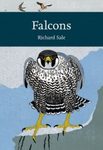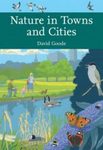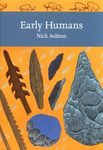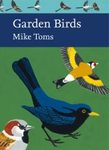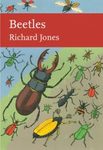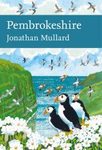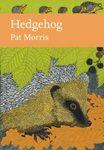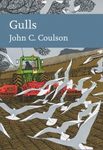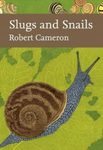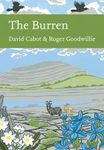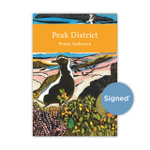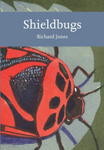About this book
The study of life in British lakes and rivers has been traditionally neglected in natural history publications, and yet the intricacies of plant and animal ecology as a whole can be readily studied in a pond or lake. Not since Macan and Worthington's landmark publication in 1951, Life in Lakes and Rivers – volume 15 in the New Naturalist series – has there been a comprehensive overview of British freshwater life. In Brian Moss's much-anticipated new volume, he gives a passionate account of the natural history of our lakes, loughs and lochs.
Our understanding of lakes has changed enormously since the days of Macan and Worthington. From new techniques using stable isotopes and molecular biology to ambitious approaches using whole lakes for experiments; from advances in chemical methods that detect tiny traces of organic substances to the development of new electronic instruments, it is becoming increasingly urgent to make use of these advances to help maintain and conserve some of the most damaged of the Earth's ecosystems.
Freshwaters form the fascinating threads that stitch together the landscapes of our planet with a myriad of exchanges involving an array of organisms, from algae and insects to hippopotami and otters. Healthy lakes and their shores influence our quality of life and they strengthen the economy. They are important ecosystems that can sustain a healthy balance of aquatic life, provide us with much enjoyment, and help support our socio-economic needs. At the same time they suffer the consequences of human abuses of the land – increasing urbanisation, intensive farming, drainage and an increasing invasion of non-native species, to name but a few. Moss explores the richness of their fundamental ecology, emphasizing the need to view these freshwater systems as a whole, and not to manage or assess them in isolation, as well as the importance of ongoing conservation efforts.
Contents
Editor's preface vii
Author's foreword and acknowledgements ix
1. Romance and Reality: Limnology in Britain and Ireland 1
2. The Nature of Lakes 25
3. Dramatis Personae: The Small Cast-members and the Big Roles 64
4. Animals: The Names in Bright Lights 106
5. On the Edge of the Land: The Littoral Zone 133
6. The Plankton: Hazard and Survival 179
7. The Deep, the Old, the Dark and the Cold 219
8. People and Lakes in Britain and Ireland: Damage and Repair 250
9. Moss's Tour: An Itinerary Among the Lakes of Britain and Ireland 308
10. The Future of the Lakes of Britain and Ireland 378
Notes 400
References 418
Index 435
Areas covered include:
England:
- Romney Marshes (Kent), largely drained, with just two natural lakes left – the Open Pools
- Loe Pool, Cornwall
- Swanpool, Falmouth
- Slapton Ley, Devon
- The Meres and Mosses, northwest Midland plain, The Welsh Hills lie to the west, the Mersey estuary to the north, and the Pennines to the east.
- The Flashes of Cheshire and Lancashire
- Martin Mere (lowlands of Lancashire)
- The Lake District (Cumbria)
- English manmade lakes (most common lake type in southern and eastern England)
- Kielder Water
- The Broads
- Cow Green reservoir
- East Midlands and East Anglia
- Graffham Water (near Cambridge)
- Rutland Water (Leicestershire)
- The Serpentine, London
Scotland:
- Orkney (Lochs of Stenness and Harrar, Isbister, Banks, Sabiston, Skaill, Bay of Ireland)
- Loch Ness
- Loch Lomond
- Loch Leven
Ireland:
- Lough Neagh (Northern Ireland)
- Lough Furnace (Mayo)
- Clew Bay (Mayo)
- Lough Feeagh (Mayo)
- Lake Bunaveela (Burrishoole catchment, Mayo)
- Nephin Beg area (Mayo)
- Lough Carra (Mayo)
- Lough Mask (Mayo)
- Lough Corrib (Galway)
- Lough Melvin (bordering Leitrim, Republic of Ireland, and Fermanagh, Northern Ireland)
- Turloughs ("dry lake" in Irish Gaelic) – Rahasane, Coole
- Lough Gill (Sligo)
Wales:
- Anglesey:
- Llangorse Lake
- Llynnoedd (the Welsh plural of lake, "llyn") Cadarn, Llwydiarth and Mynydd Bodafon
- Llynnoedd Llygeirian and Hafadol, Maelog, Rhos Ddu and Coron
- The largest lakes on Anglesey, Alaw and Cefni (reservoirs), and the largest natural Lake, Llyn Traffwll
- Snowdonia:
- 400 lakes! MANY covered, for instance:
- Cwellyn, Peris, Padarn and Ogwen, in the northwest, Gwynant and Dinas in the southwest and Eigiau, Cowlyd, Crafnant and Geirionydd in the northeast. They are higher, cooler and less well known than the English Lakes and it is said that one visits the English Lake District for the lakes and Snowdonia for the mountains.
- Llyn Caseg Fraith is the lake of the dappled mare, Llyn Crafnant that of the garlic hollow and Llyn y Dywarchen that of the floating island.
- Llyn Tegid
- Llyn Brenig
- Llyn Celyn
Pembrokeshire:
No natural lakes, but three artificial ones:
- Rosebush and Llys-y-Fran
- Bosherston Lake, or Bosherston Lily Ponds
Customer Reviews


















